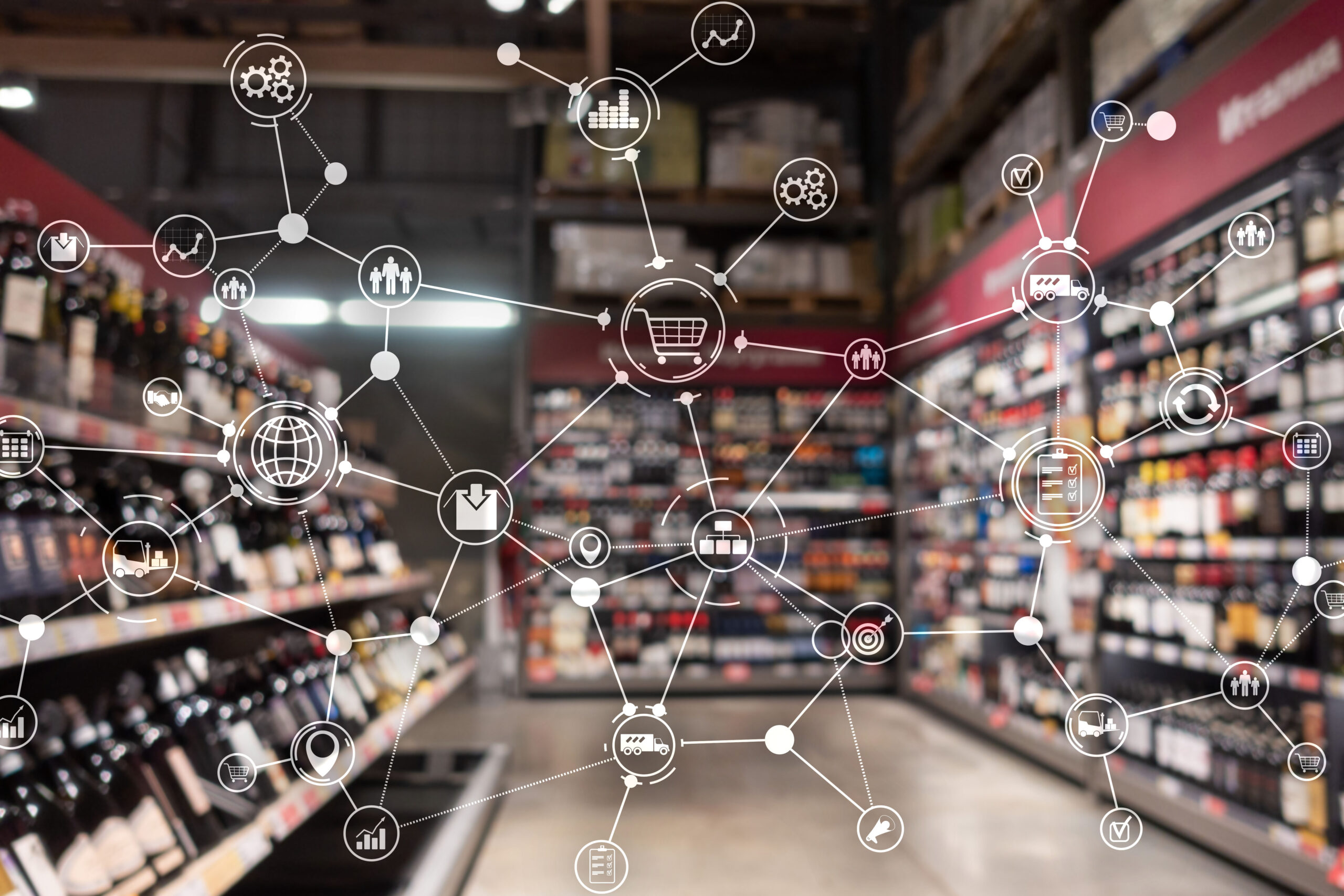The role of consumer packaged goods (CPG) analytics has become more pivotal than ever in the retail landscape. As the backbone of modern retail strategies, CPG analytics influence decisions and actively shape the future of purchasing. This blog post delves into the profound impact of these analytics, exploring how they harness data to drive innovation, personalize customer experiences, and optimize supply chains. In an era where data is king, understanding the impact of CPG analytics is crucial for retailers looking to stay ahead of the curve. Join us as we unravel how these powerful tools are revolutionizing the industry and predicting market trends in 2024.
Why Do CPG Analytics Matter?
CPG analytics are critical to making data-driven decisions. In the consumer packaged goods space, relying on data rather than guesswork sets the stage for informed strategies and successful outcomes. According to insights from Ernst & Young, data allows us to tap into the customer experience, the ultimate decision-maker when making or breaking CPG brands.
By harnessing the insights gleaned from CPG analytics, businesses can tailor their offerings to create consumer-centric experiences. These experiences are more than just transactions; they represent a journey that resonates deeply with consumers, fostering brand loyalty and encouraging repeat purchases. Such a strategic approach leads to profit growth through direct sales and building a brand image that consumers are eager to endorse.
Consumers have many choices, and earning their trust is vital. Companies leveraging sales data to understand and anticipate consumer needs can establish themselves as trusted brands in a crowded marketplace. The question then becomes, what is the data telling us? Let’s take a look.
8 Ways CPG Analytics Are Shaping Retail Trends in 2024
The CPG industry, always evolving with consumer tastes, technological breakthroughs, and market trends, is poised to embrace several key transformations in 2024. Here are the anticipated trends CPG data analytics will shape retail strategies in the coming year:
Customization Is Key
Advanced customization in consumer engagement is a pivotal trend in the CPG market. According to a study by Twillo, 60% of consumers report becoming a repeat buyer after a personalized brand encounter.
This involves more than just recommendations; it’s about creating an entire consumer experience that feels individually crafted, including:
Personalized Product Offerings: CPG companies are leveraging data analytics to understand consumer behaviors and preferences at a granular level. This enables them to offer products more aligned with individual tastes and needs. For instance, a health food brand may use purchase history data to suggest specific nutritional supplements to a customer based on their past selections and health goals.
Targeted Marketing Strategies: By analyzing consumer data, firms can develop highly targeted marketing campaigns. This might involve sending personalized emails, offering special deals on items a consumer has shown interest in, or even suggesting products before the consumer realizes they need them.
Customized Packaging: Innovative companies are also using data to customize packaging. This can range from using sustainable materials for environmentally conscious consumers to creating visually appealing packaging designs based on consumer aesthetic preferences.
Enhanced Online and In-Store Experiences: Retailers and brands are creating seamless omnichannel experiences, using data analytics to ensure that the experience is consistent and tailored to their preferences whether a customer shops online or in-store.
Demand Forecasting and Inventory Management: Analytics help predict future product demand, allowing for more efficient inventory management. This ensures that consumers find what they need when they need it, enhancing satisfaction and loyalty.
Dynamic Pricing Models: By understanding market trends and consumer habits, CPG firms can adjust pricing in real-time to optimize sales and profitability.
This trend towards advanced customization in consumer engagement represents a significant shift in how CPG firms interact with their customers. It’s no longer about selling a product; it’s about creating a unique experience that resonates with each individual, fostering a deeper connection and loyalty to the brand.
Don’t Overlook Authenticity
Although it’s clear the demand for personalized experiences is at an all-time high, it’s also clear it should never come at the cost of authenticity. Consumers seek genuine interactions and truthful representations of products and services. The allure of personalized marketing, suggesting exactly what consumers want to hear, is strong, yet it must be rooted in reality. The notion of false advertising is not just frowned upon; it’s a direct path to losing consumer trust and loyalty.
An Emplifi study underscores this point, revealing that 40% of consumers are likely to recommend a brand to others following an authentic customer care experience. This statistic highlights the power of genuine interactions in fostering brand loyalty and advocacy. Moreover, 87% of consumers view user reviews and ratings as the most authentic form of interaction with brands. Ensuring consistent, authentic experiences is not just beneficial for building trust with individual consumers; it’s crucial for maintaining a positive brand image in the broader market.
Health and Wellness Are Here to Stay
Health and environmental consciousness are here to stay in 2024. According to an article released by Deloitte, today’s consumers are more informed and concerned about the ingredients in their products and their overall impact on health and the environment. It goes on to quote Randy Jagt, the Future of Food Lead, who said “64% of respondents indicate that over the past 12 months they have become more interested in learning more about the influence of food on their health.”
Recognizing this shift in consumer priorities, CPG companies are actively responding by diversifying their product lines. This diversification isn’t just about expanding the range of products but is focused on including options that cater to health-conscious consumers. This includes the introduction of healthier alternatives, organic products, and items with fewer preservatives or artificial ingredients. Additionally, there’s a significant emphasis on transparency, with companies adopting clear, transparent ingredient labels. This approach not only helps in building trust with consumers but also caters to the growing demand for products that support a healthier lifestyle.
eCommerce is on the Rise
In 2024, the retail industry is witnessing a continued shift towards e-commerce, fundamentally altering how CPG companies approach their go-to-market strategies. The digital marketplace is not just an alternative to physical stores; it’s becoming the primary shopping venue for a growing number of consumers. In fact, according to a report by Winning Formulas for E-Commerce Growth, e-commerce is forecasted to constitute 41% of global retail sales by 2027.
This shift is prompting CPG businesses to refine their online strategies vigorously. Particularly, there’s a focus on direct-to-consumer (DTC) models. In these models, brands bypass traditional retail channels to engage directly with customers through their online platforms. This approach allows brands to offer exclusive products and experiences that aren’t available in conventional retail settings. The DTC model is advantageous for CPG companies as it provides them with direct access to consumer data, which can be used to tailor marketing strategies, product development, and customer experiences more effectively.
The shift towards e-commerce has significantly altered the retail landscape, placing an unprecedented level of importance on the customer experience in brick-and-mortar stores. In this new reality, physical stores have considerably less margin for error. The first encounter a customer has with a store can make or break their perception of the brand, as well as their likelihood of returning.
Unlike online shopping, the in-person experience at a brick-and-mortar store is immediate and impactful. This puts immense pressure on physical retailers to exceed customer expectations from the very first visit. Creating a positive, memorable experience is crucial, as it can be the deciding factor between cultivating loyal customers or driving them towards the myriad of online alternatives. Conversely, brick-and-mortar stores also need to leverage data to understand how to create a seamless online experience that helps boost customer loyalty and compliments the impeccable customer service, engaging store environments, and personalized interactions that resonate with their in-person visitors.
Sustainability and Environmental Impact is Top of Mind
CPG companies are increasingly integrating sustainable practices throughout their operations, from sourcing raw materials to manufacturing and packaging. This shift is not merely a response to consumer demand but also a part of broader corporate responsibility initiatives. Sustainable practices include using renewable resources, reducing carbon footprints, and implementing eco-friendly manufacturing processes. Packaging, in particular, has become a focal point, with companies investing in recyclable, biodegradable, or compostable materials to reduce plastic waste. According to a study conducted by McKinsey, over 60% of consumers said they would pay more for a product that had sustainable packaging, showing us that consumers are shifting their purchasing to products that prioritize sustainability. This alignment of brand values with those of eco-conscious consumers is creating a positive brand image and loyalty among a segment of the market that values environmental responsibility.
Initiatives for reusable packaging are also gaining momentum, with brands introducing systems where consumers can return packaging for reuse. These efforts are aimed at creating a closed-loop system, drastically reducing the need for single-use packaging. Such initiatives often involve collaborations between companies and specialized recycling firms to ensure the efficient collection, cleaning, and redistribution of packaging materials.
AI is In
Leveraging AI for product development and in-store marketing strategies is transforming the CPG sector in profound ways.
According to an article by Consumer Goods Technology, “Rapid advancements in AI and generative AI present valuable opportunities for CPG companies to refine business operations and increase their competitive advantage. By adopting AI, brands can significantly enhance their data analytics capabilities for stronger innovation, decision-making, and productivity.’
Through the use of predictive analytics, AI is enhancing demand forecasting, enabling businesses to anticipate market needs with greater accuracy. This technology is also playing a pivotal role in product development, providing actionable insights that inform the creation of new products.
Additionally, AI-driven data analysis is revolutionizing production processes. Automation, fueled by AI, is not only reducing costs but also facilitating quicker adaptation to market changes. The ability to rapidly respond to evolving consumer preferences and market dynamics is proving indispensable for staying competitive in the fast-paced CPG industry.
The effectiveness of AI in retail hinges on the quality and relevance of the data it utilizes. At InContext, our AI solution sets itself apart by leveraging a vast customer data set of 3 million virtual shopping trips. This extensive dataset offers a unique understanding of consumer behavior across various retail environments, providing metrics that are both specific and highly actionable. With these insights, our AI model can rapidly validate merchandising assumptions, delivering answers much quicker than traditional methods or even virtual studies. Our AI doesn’t just rely on broad generalizations; it draws from real-world, scenario-based data to predict outcomes accurately. This approach not only speeds up the decision-making process but also minimizes the costs associated with trial-and-error strategies. At InContext, we employ these AI tools to provide a more efficient and cost-effective way for businesses to understand what will resonate with their customers, helping them stay ahead of the competition and make data-driven decisions with confidence.
The Importance of Testing, Even if It’s Trending
As a crucial tool for enhancing the shopper experience, data offers a comprehensive, objective understanding of consumer actions and preferences. Through data analysis using advanced analytics tools like our virtual shopper research platform, companies can gain insights into customer interactions with their products and services. Leveraging behavioral insights from diverse data sets and sources, businesses can make informed decisions that align with customer needs, culminating in a shopping experience that drives sales more efficiently.
InContext’s ShopperMX platform exemplifies the power of data in retail decision-making. This innovative platform allows businesses to create digital twins of store environments, enabling them to test and predict outcomes before any physical implementation. By replicating real-life products in a virtual setting, companies can analyze customer behavior in various shopping scenarios using data-driven decisions. This approach not only reduces the risks associated with in-store implementations but also enhances the overall customer experience by preemptively addressing potential issues. The platform serves as a tool for exploring growth opportunities, pricing strategies, and various use cases, ultimately contributing to revenue growth.
Using data-driven strategies provides a long-term, sustainable approach to understanding and predicting shopper behavior, allowing businesses to delve into the historical patterns and shifts in consumer behavior, offering a comprehensive view over extended periods.
Leave the Guesswork Behind, Partner With InContext
In the dynamic world of retail, InContext stands at the forefront, offering businesses the best of both worlds: deep insights into prevailing trends and the robust tools needed to ensure these trends align with their unique business goals. Finding the right balance between following trends and relying on data is crucial for shaping a successful business strategy. Trends, while offering a valuable snapshot of current consumer preferences and market dynamics, only tell part of the story. Data, on the other hand, provides a continuous, in-depth understanding of customer behavior and market shifts over time.
InContext harnesses the power of both, enabling businesses to develop agile, adaptable strategies that stay relevant in a constantly changing landscape while being firmly grounded in solid consumer insights. This balanced approach equips companies with the capability to stay ahead of the curve, offering products and services that not only resonate with their customers but also foster long-term success in an ever-evolving business environment.
With InContext’s expertise in understanding shopper behavior and providing actionable recommendations, businesses are poised to thrive beyond the transient nature of trends. This ensures sustained growth and success in a highly competitive market. If you’re looking to elevate the customer experience with confidence and precision, InContext is your go-to partner. Our data-driven strategies are tailored to guarantee long-term success in retail, making them an invaluable ally in navigating the complex retail landscape. Contact InContext today to transform your retail strategy.





